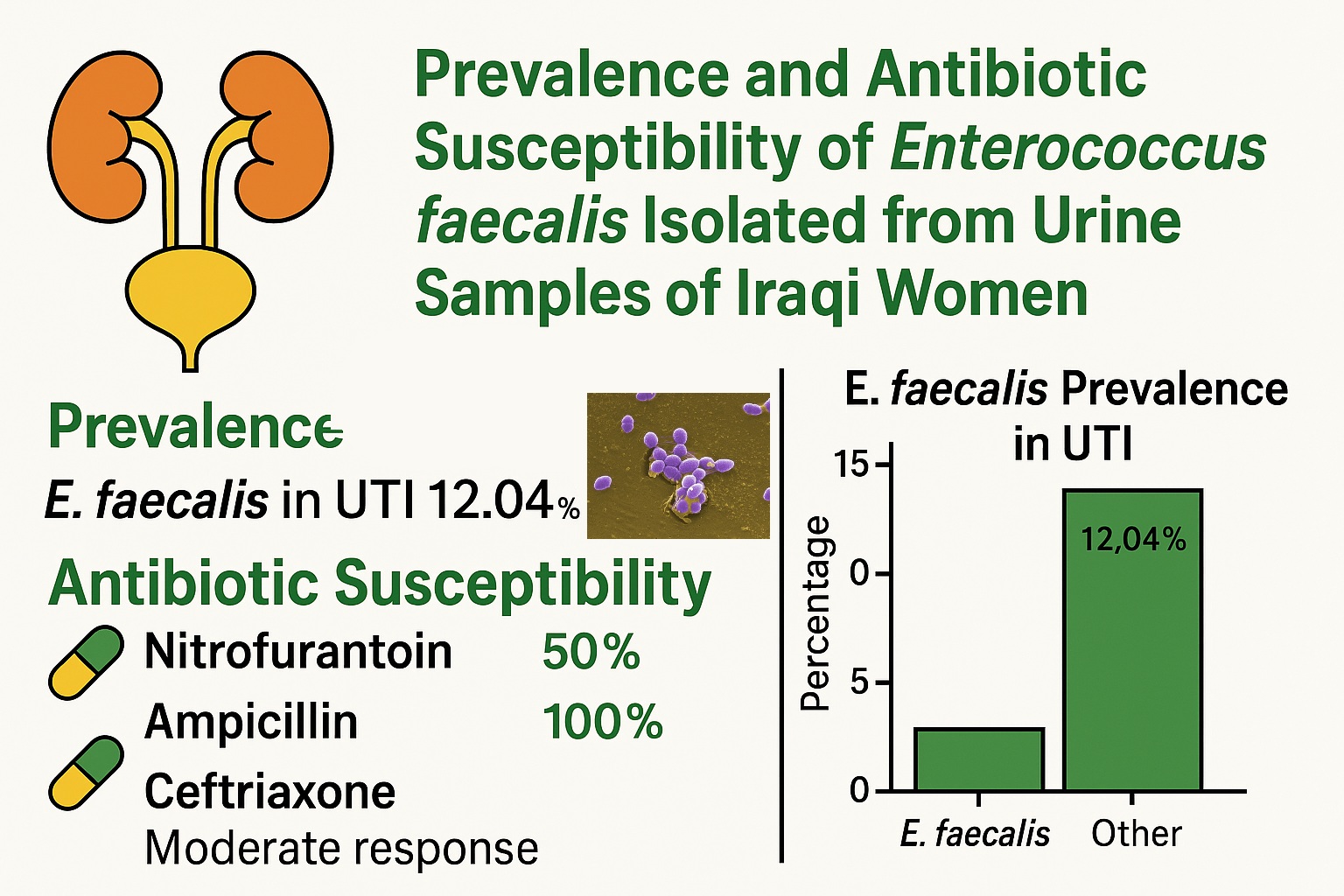Prevalence and Antibiotic Susceptibility of Enterococcus faecalis Isolated from Urine Samples of Iraqi Women
Keywords:
Ampicillin, Ceftriaxone, Enterococcus faecalis, Minimum Inhibitory Concentrations, Nitrofurantoin, UTIsAbstract
Enterococcus faecalis is one of the most important pathogens associated with urinary tract infections (UTIs) in women. The literature on the incidence of UTI infections caused by E. faecalis in Iraq is limited. The increasing antibiotic resistance of this bacterium is one of the main challenges facing clinicians. This study aims to investigate the prevalence of E. faecalis UTIs in Iraq and to assess the response pattern to three commonly used antibiotics in Iraq: nitrofurantoin, ampicillin, and ceftriaxone. A total of 83 urine samples were collected from women suffering from UTIs. Morphological and biochemical methods were used to identify the isolates, and VITIK II technology was employed to confirm bacterial identification. The microdilution in microtiter plates was used to measure the susceptibility of E. faecalis to the three antibiotics. The results showed that the rate of UTI caused by E. faecalis was moderate, at 12.04%. The resistance to ampicillin was 100%, while resistance to nitrofurantoin was 50%. The response to ceftriaxone was also moderate. In conclusion, the study found that the incidence of UTI with E. faecalis among patients was moderate, and the effectiveness of nitrofurantoin was 50%.

Downloads
Published
Issue
Section
License

This work is licensed under a Creative Commons Attribution-NonCommercial-NoDerivatives 4.0 International License.



